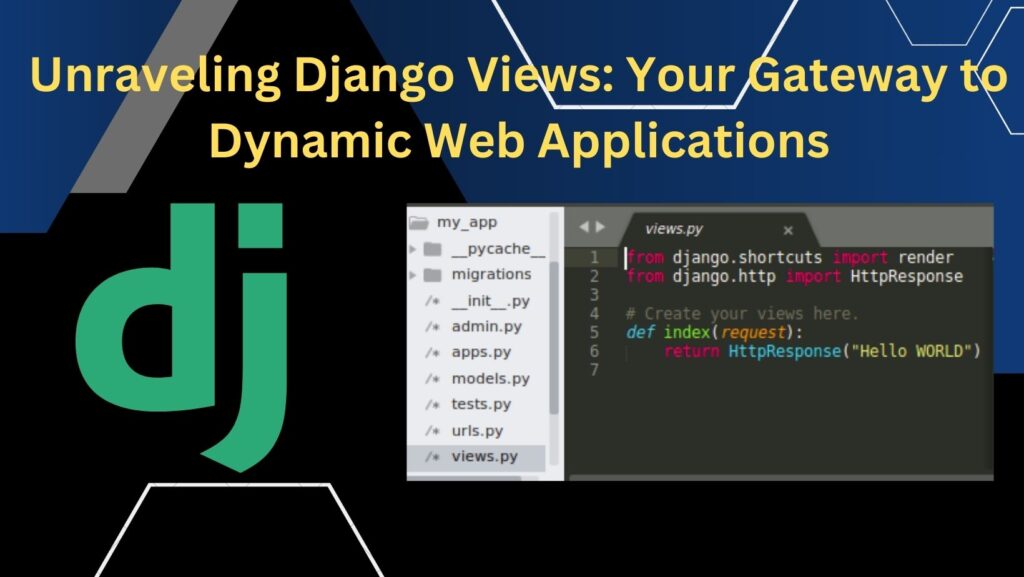Unraveling Django Views: Your Gateway to Dynamic Web Applications
When it comes to building dynamic and interactive web applications with Django, understanding views is paramount. In this blog post, we’ll dive into the world of Django views, exploring what they are, why we create them, and the best practices for crafting efficient views.
What Are Django Views?
In the realm of Django, views act as the bridge between the user’s request and the appropriate response. They encapsulate the logic that processes the request, interacts with the database if necessary, and returns a response – be it a web page, a redirect, or even an error message.
Anatomy of a View Function
A Django view is often implemented as a Python function or class-based view. Here’s a simple example of a view function:
from django.shortcuts import render
from django.http import HttpResponse
def my_view(request):
# Your view logic goes here
return render(request, 'my_template.html', {'data': 'Hello, Django!'})
In this example, the my_view function takes a request parameter, processes it as needed, and returns a rendered template with some data.
Why Do We Create Views?
1. Separation of Concerns:
Views enable a clean separation of concerns in your Django application. Business logic resides in views, keeping your models focused on data, and templates focused on presentation.
2. Code Reusability:
By creating modular views, you enhance code reusability. A well-designed view can be used in multiple parts of your application, promoting a DRY (Don’t Repeat Yourself) coding philosophy.
3. Dynamic Content:
Views allow you to serve dynamic content. Through templates and context data, you can create web pages that adapt to user input, database changes, or other dynamic factors.
4. URL Mapping:
Views play a crucial role in URL mapping. They define the logic that gets executed when a specific URL pattern is matched, enabling the routing of users to the appropriate pages.
Best Practices for Creating Views:
1. Keep Views Simple and Concise:
Break down complex functionalities into smaller, manageable views. Each view should have a specific purpose, making your codebase more maintainable.
2. Use Class-Based Views (CBVs) for Reusability:
Class-Based Views offer a more organized and reusable approach, especially for common patterns like displaying a list of objects or handling form submissions. Django provides a variety of generic CBVs for standard use cases.
3. Leverage Django’s Functionality:
Utilize Django’s built-in functionalities like decorators (@login_required, @require_POST, etc.) to enhance the behavior of your views without reinventing the wheel.
4. Separate Concerns with Template Tags and Filters:
Keep your views clean by moving presentation logic into template tags and filters. This maintains a clear distinction between data processing in views and rendering in templates.
5. Optimize Database Queries:
Be mindful of database queries within your views. Use Django’s ORM efficiently, consider lazy loading, and use tools like Django Debug Toolbar to identify and optimize queries.
Conclusion:
Django views are the backbone of dynamic web applications, serving as the gateway between user requests and server responses. By understanding the importance of views and following best practices, you can build scalable, maintainable, and feature-rich web applications with Django.
So, next time you’re crafting your Django application, remember: views are not just functions; they are the architects of your web experience.
Ready to dive deeper into Django and enhance your coding skills? Check out my YouTube channel for in-depth tutorials and insights. Subscribe [here] for regular updates and coding adventures!
And for an even more immersive experience, consider exploring my ebook, It’s not just a book; it’s a template for success! Grab your copy [here] and elevate your Django development journey.
Happy coding with Django views!

